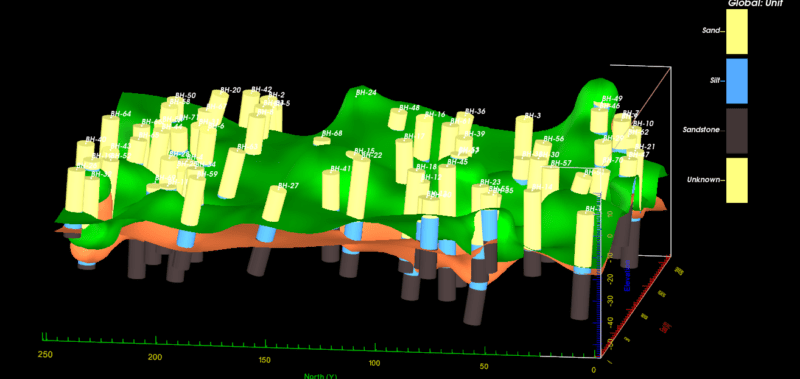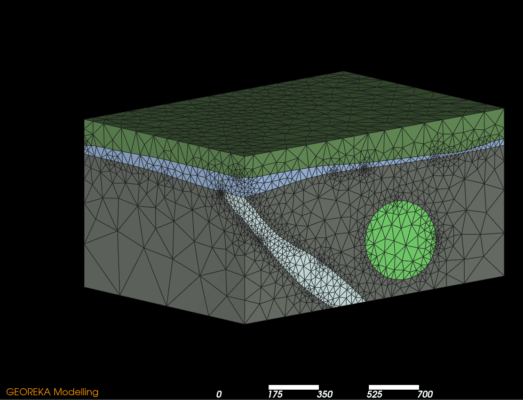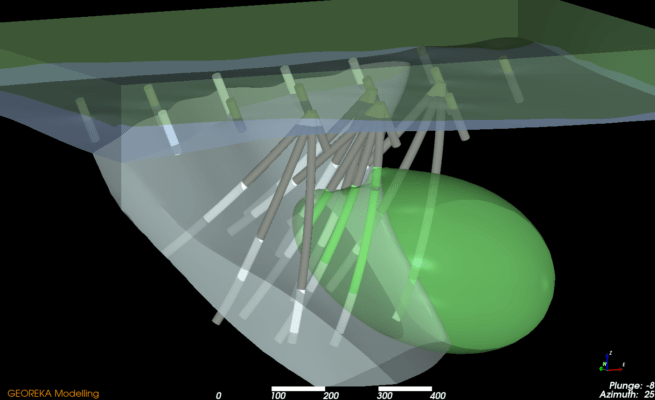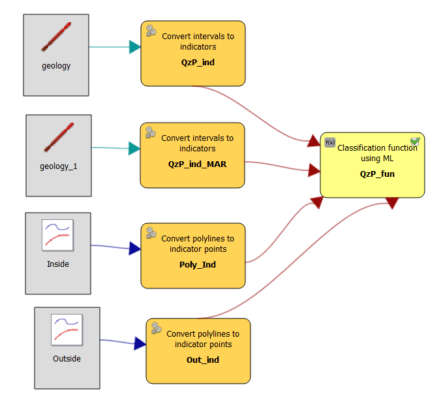With all the hype around Machine Learning (ML) in modelling geology these days, it feels a bit like we are trying to jump the ML wagon too. In some ways, I guess that is true. But not because we like the hype so much. In this article we will share some results before going into a bit more details. That way you can quickly decide if you want to continue reading.
However, before we go on explaining our use of Machine Learning, let us make a distinction between AI (Artificial Intelligence) and Machine Learning (ML). As the name AI implies, it contains some intelligence specifically in decision making. In contrast, to us ML is about learning correlations within the data provided. There is no ‘intelligence’, that is left to the user.




